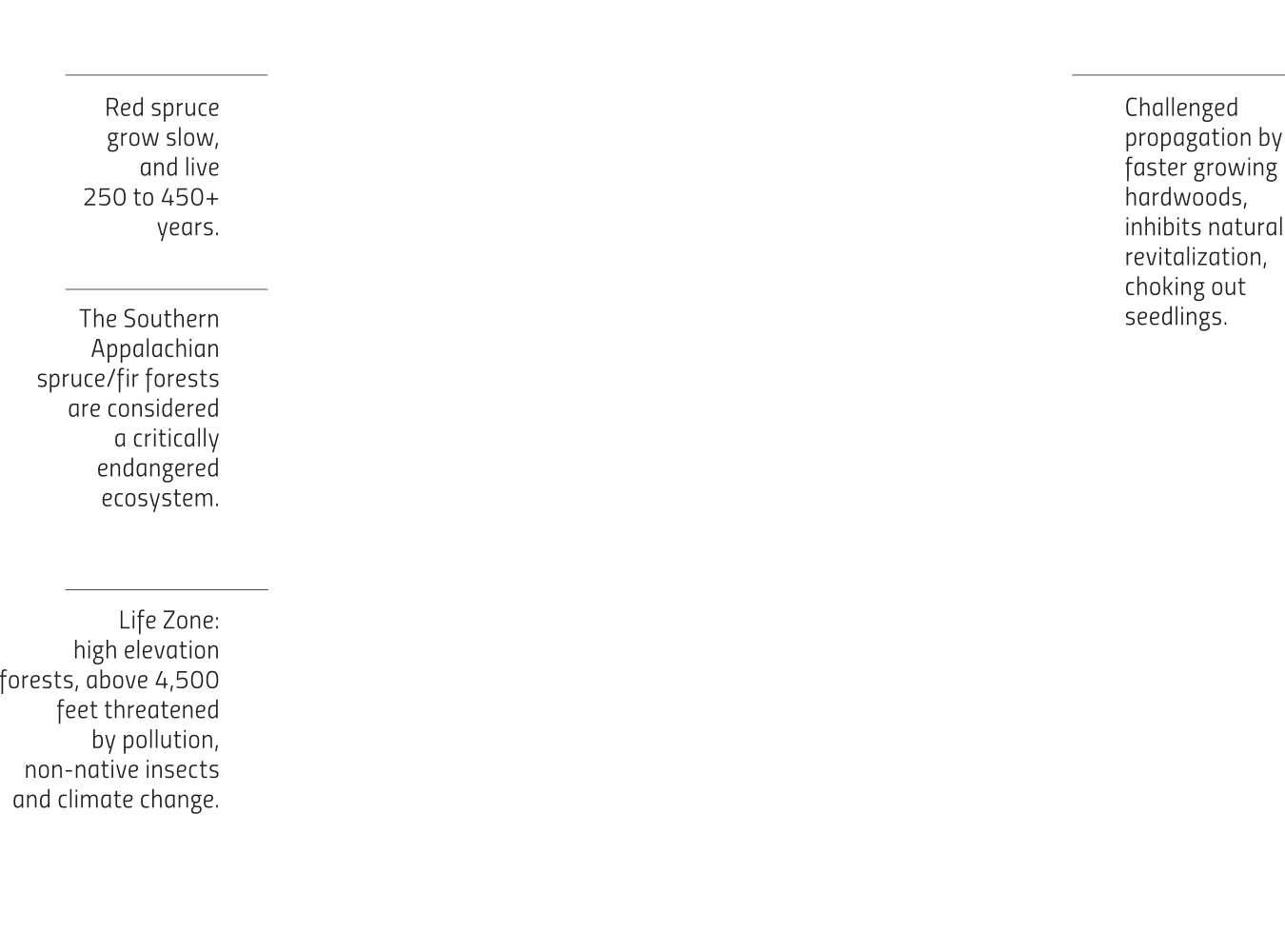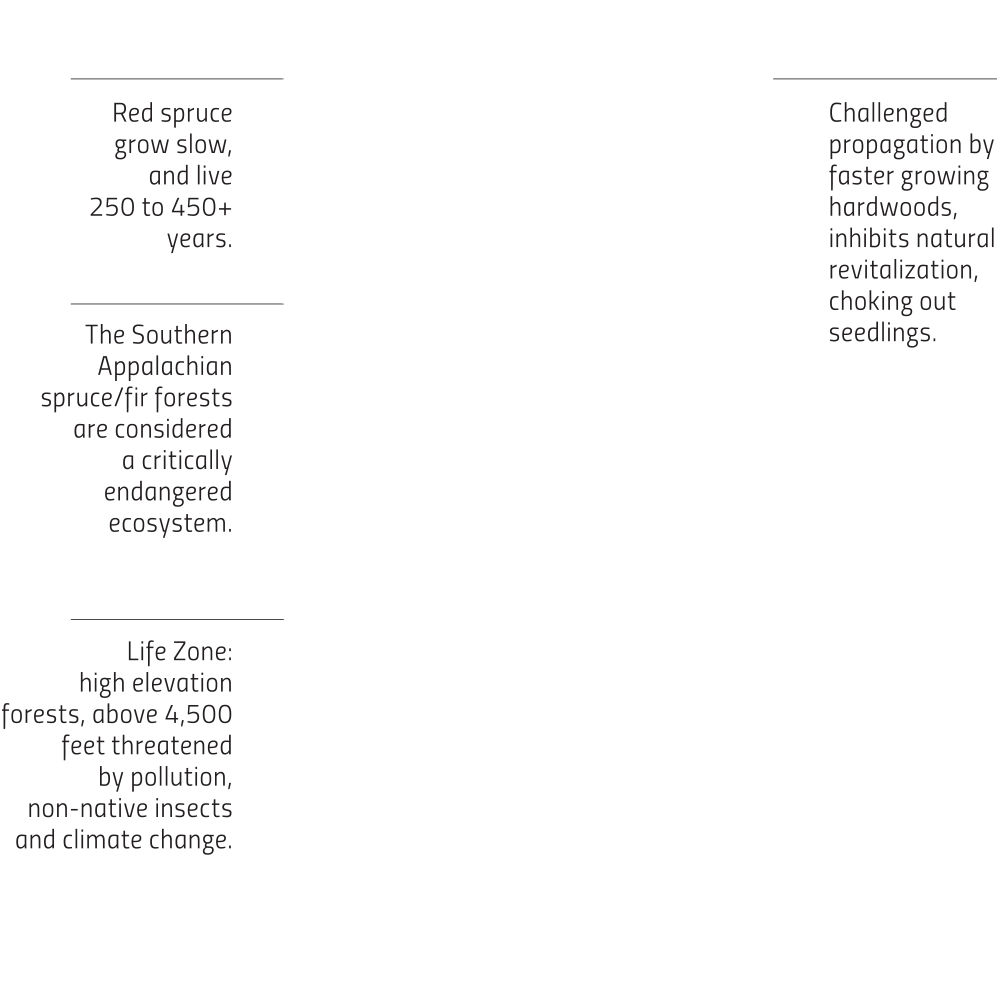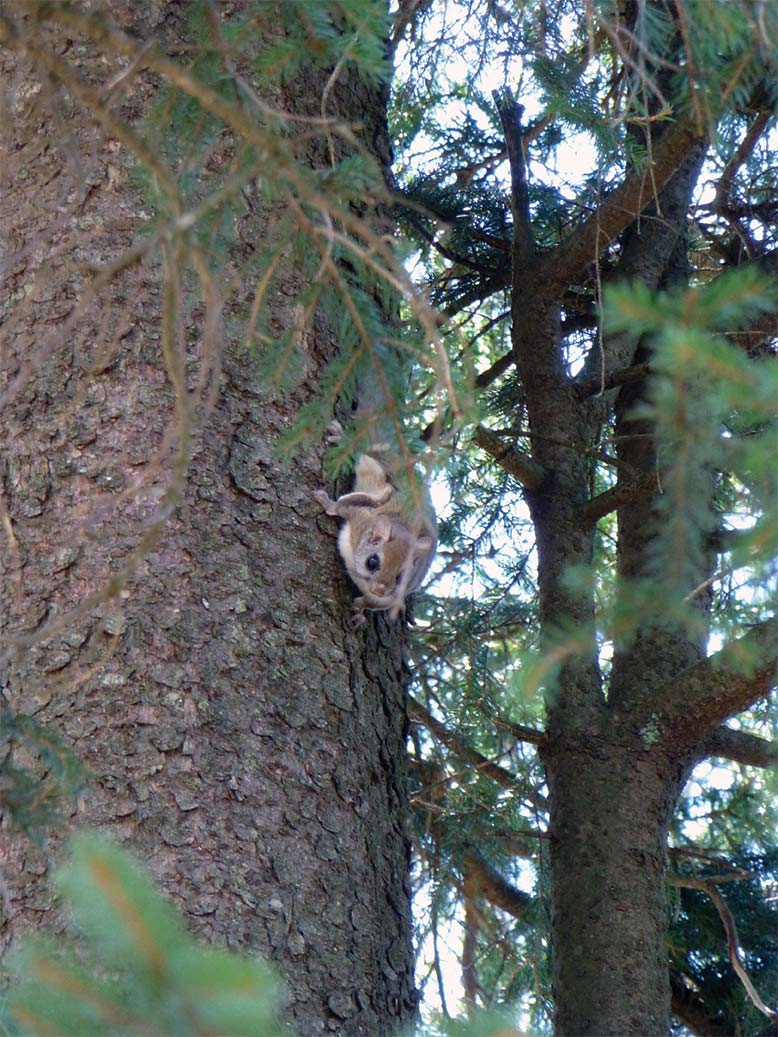
RED SPRUCE
by Matt Drury
Top: The A.T. passes through spruce forest on Unaka Mountain, North Carolina / Tennessee.
By Leanna Joyner


ILLUSTRATION COURTESY BIODIVERSITY HERITAGE LIBRARY
RED SPRUCE
(Picea rubens) once thrived in the southern Appalachian’s iconic areas of Clingmans Dome, Mount Rogers, and Roan Mountain. These forests are now considered a critically endangered ecosystem.
Red spruce were heavily logged between 1905 and 1930, followed by wildfires, further drying the soils making conditions poor for germination. Hardwood species had the advantage (birch, cherry, maple) choking out spruce seedlings.
Spruce‐fir provides critical habitat for a host of plant and animal species, including the federally endangered Carolina northern flying squirrel, who eats truffles, the fruiting bodies of mycorrhizal fungi associated with the roots of red spruce trees. The red crossbill, a stocky red or greenish finch, eats spruce seed and has a specialized bill that pries open cones to extract seed. Also, the federally endangered spruce-fir moss spider, one of the smallest members of the primitive suborder of spiders popularly referred to as “tarantulas.” This spiders’ range is limited to a handful of mountains in western North Carolina, eastern Tennessee, and southwest Virginia. And rare Weller’s salamanders are associated with high elevation spruce-fir forests.

Red spruce are a critical component to Carolina northern flying squirrel habitat. By C. Kelly